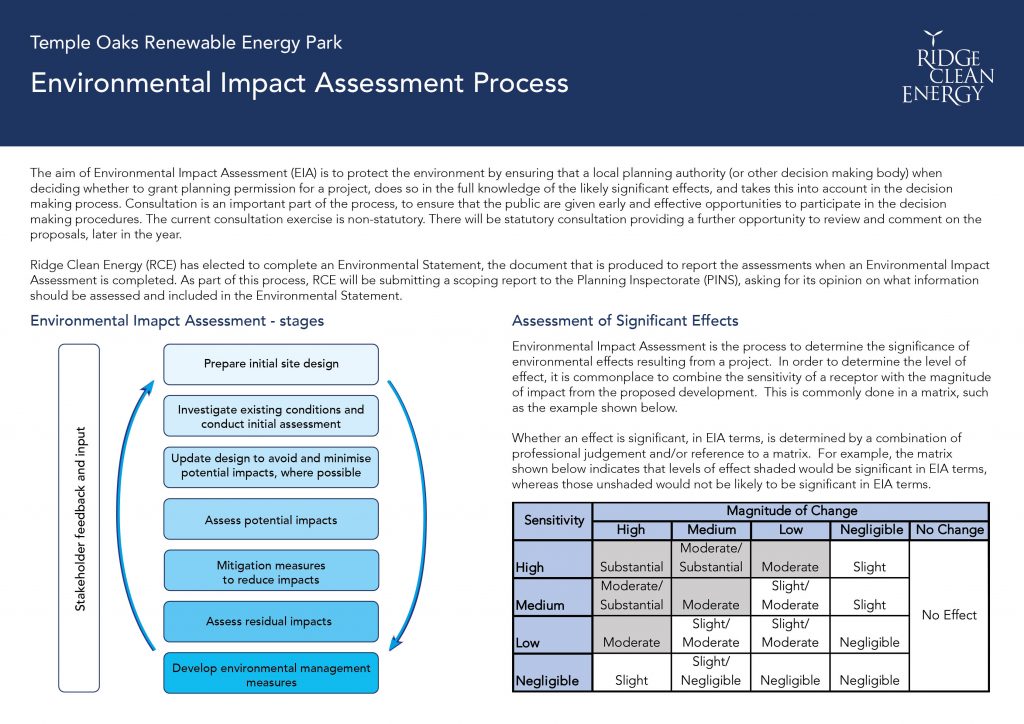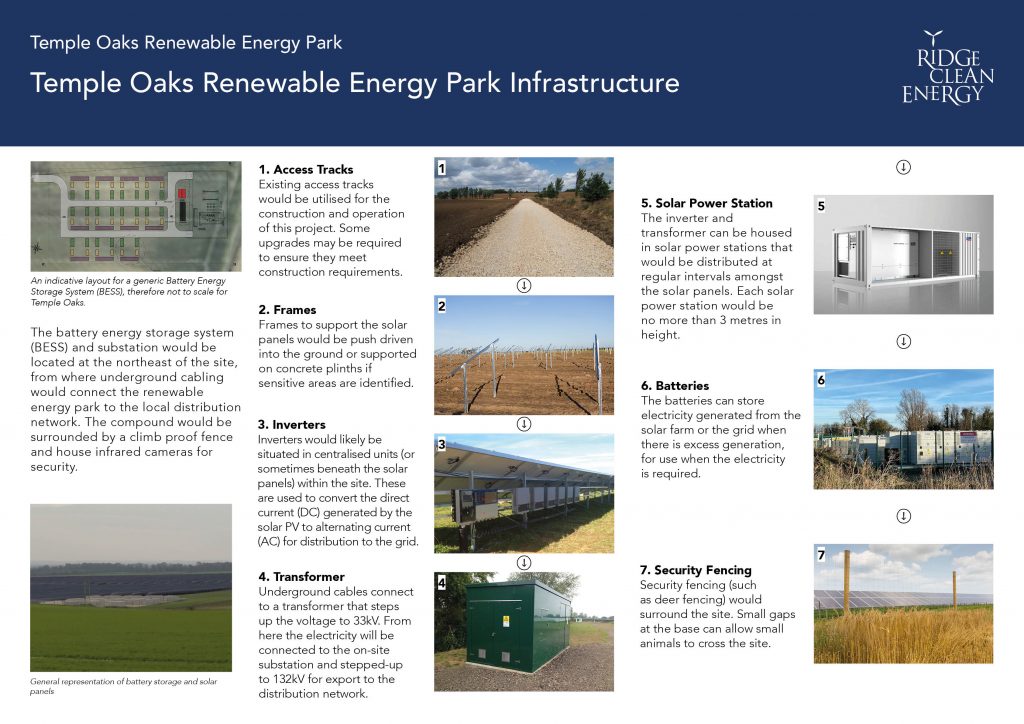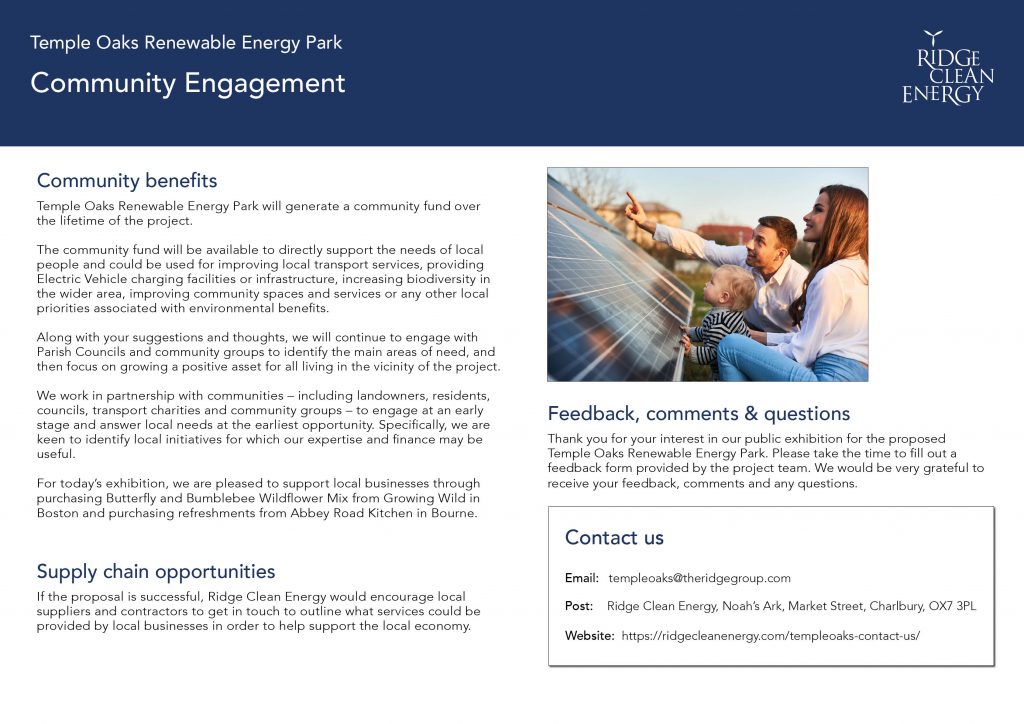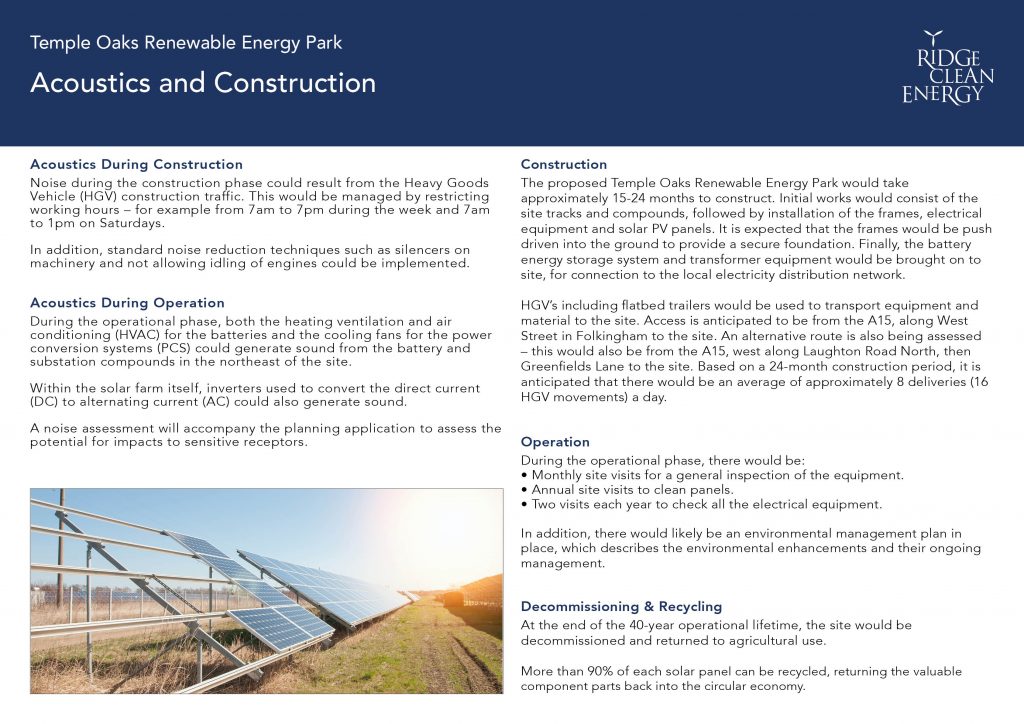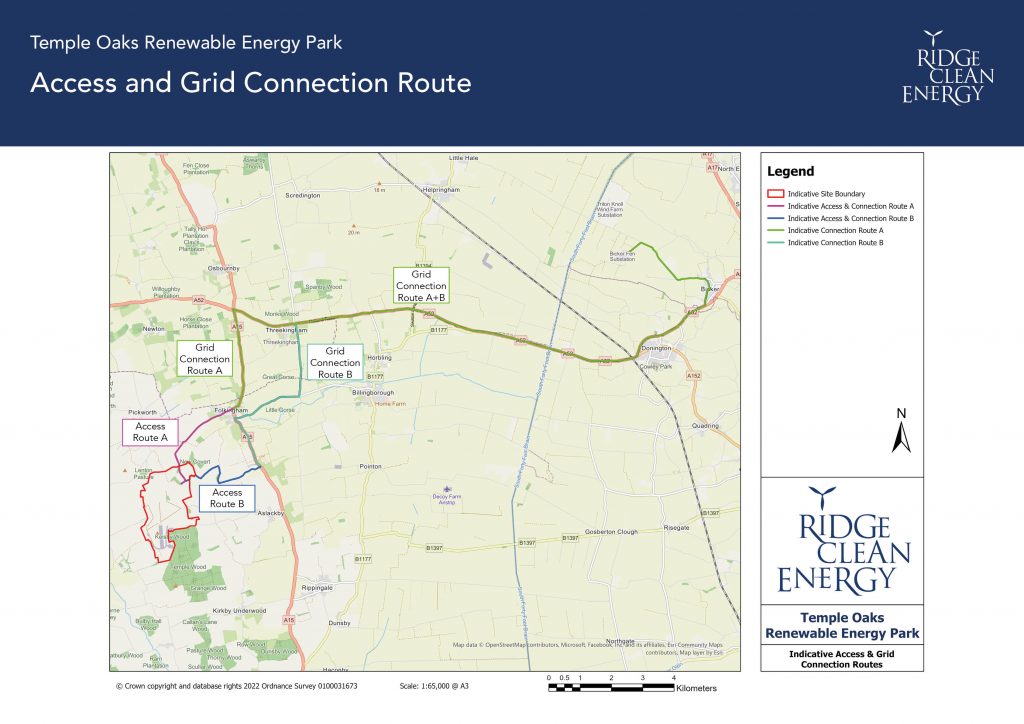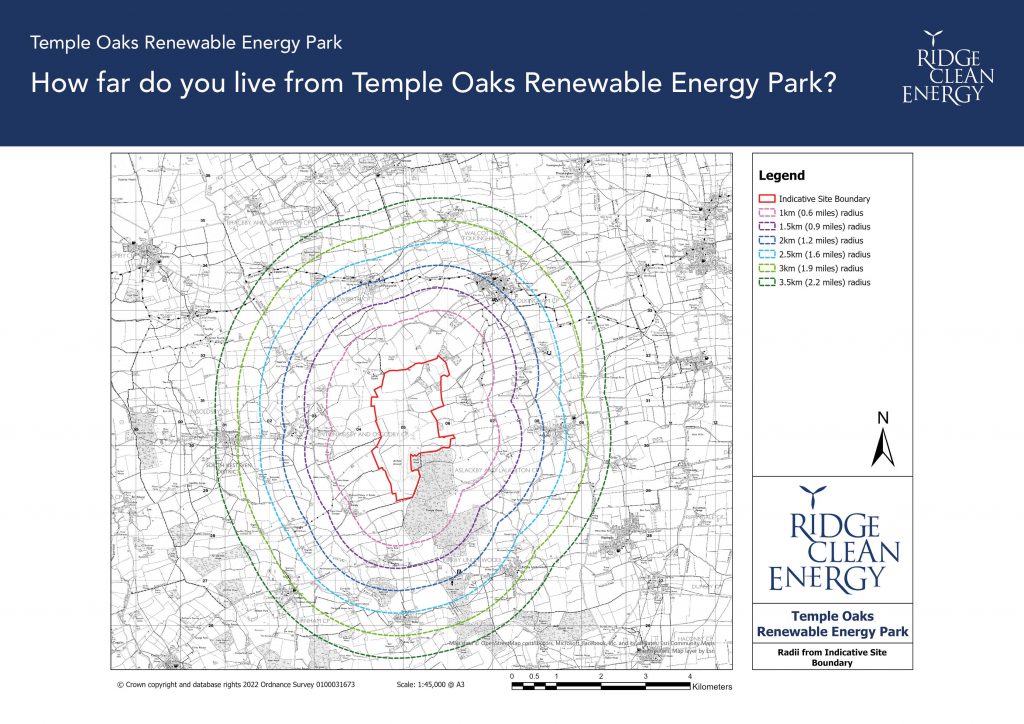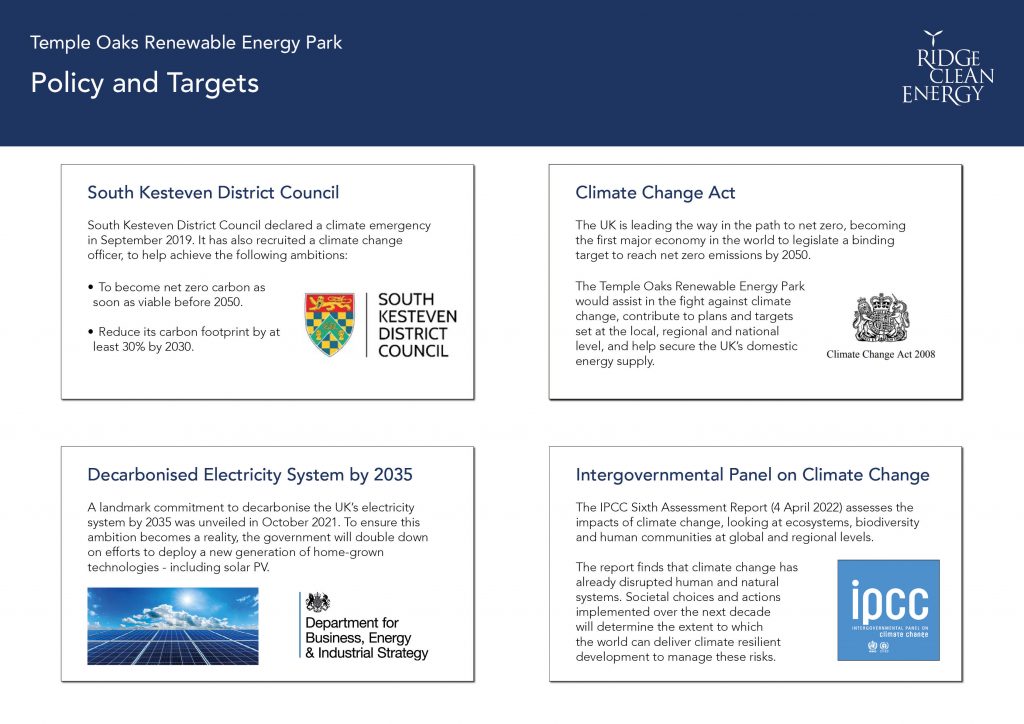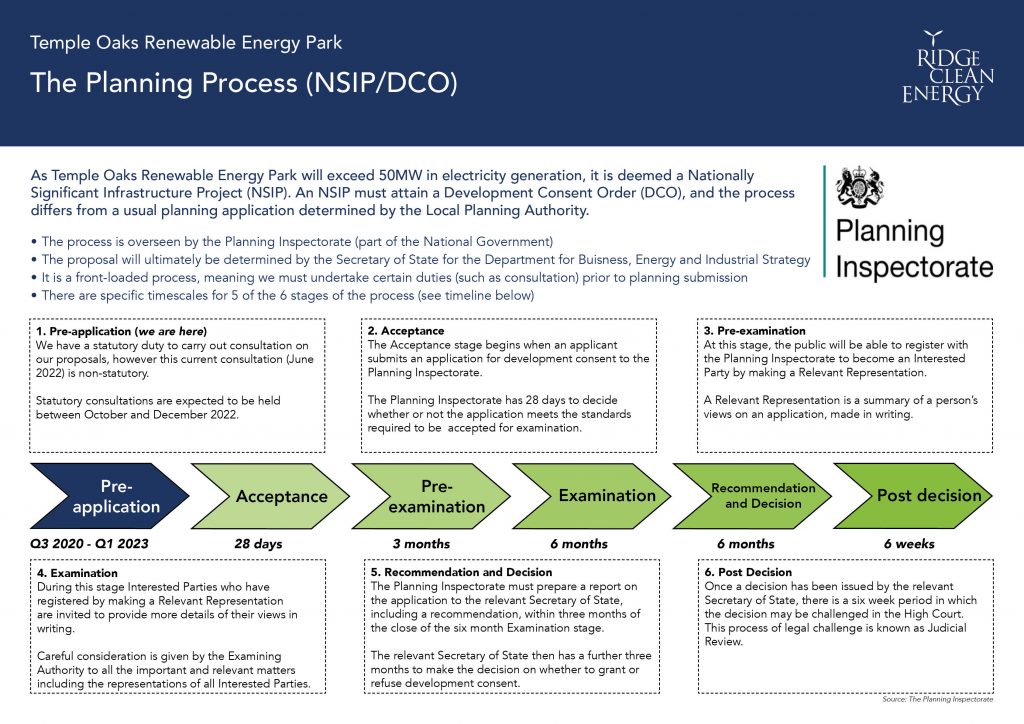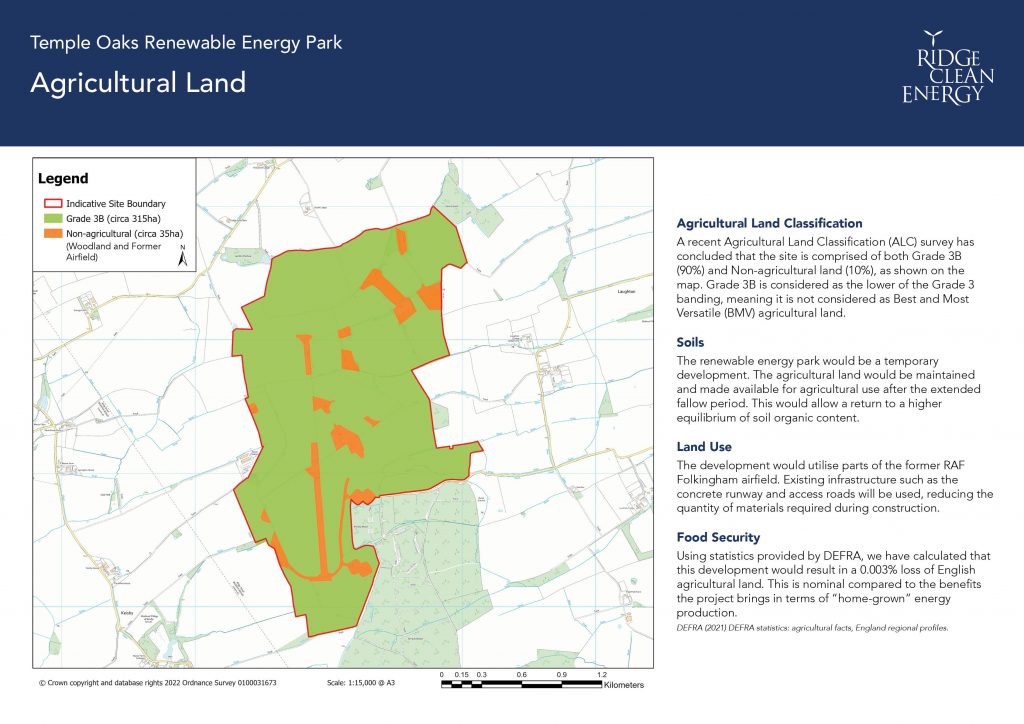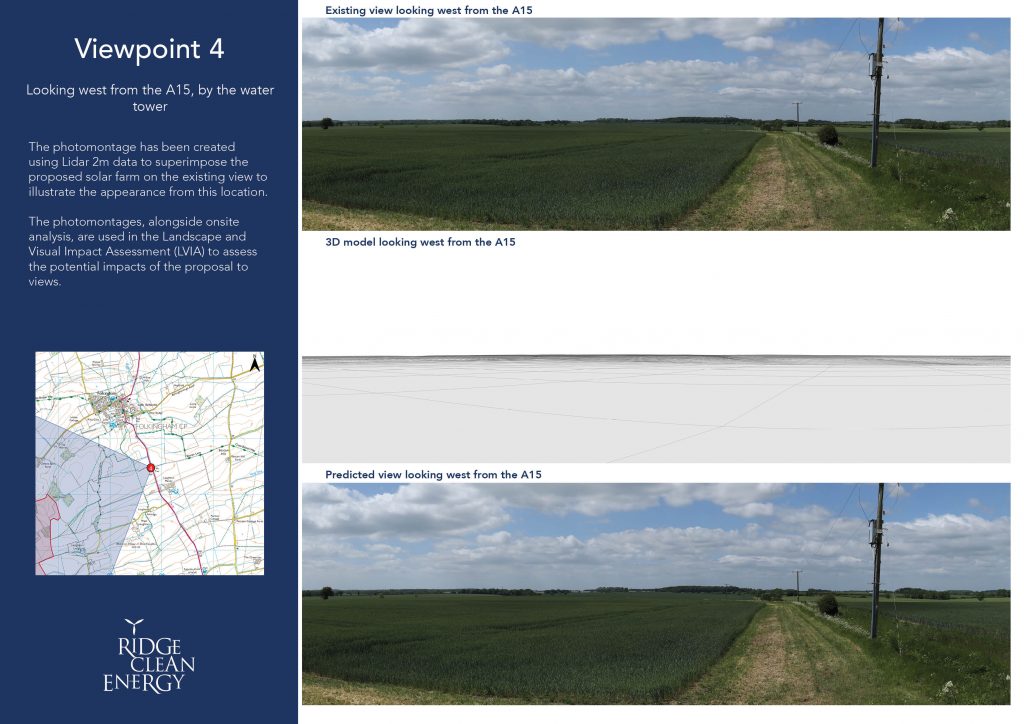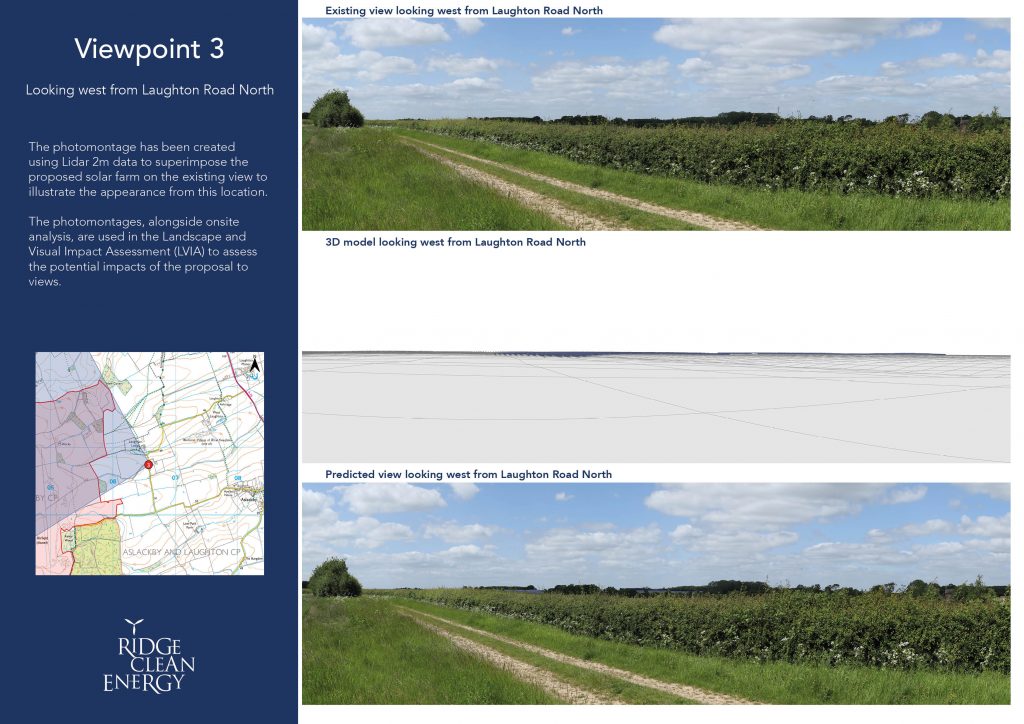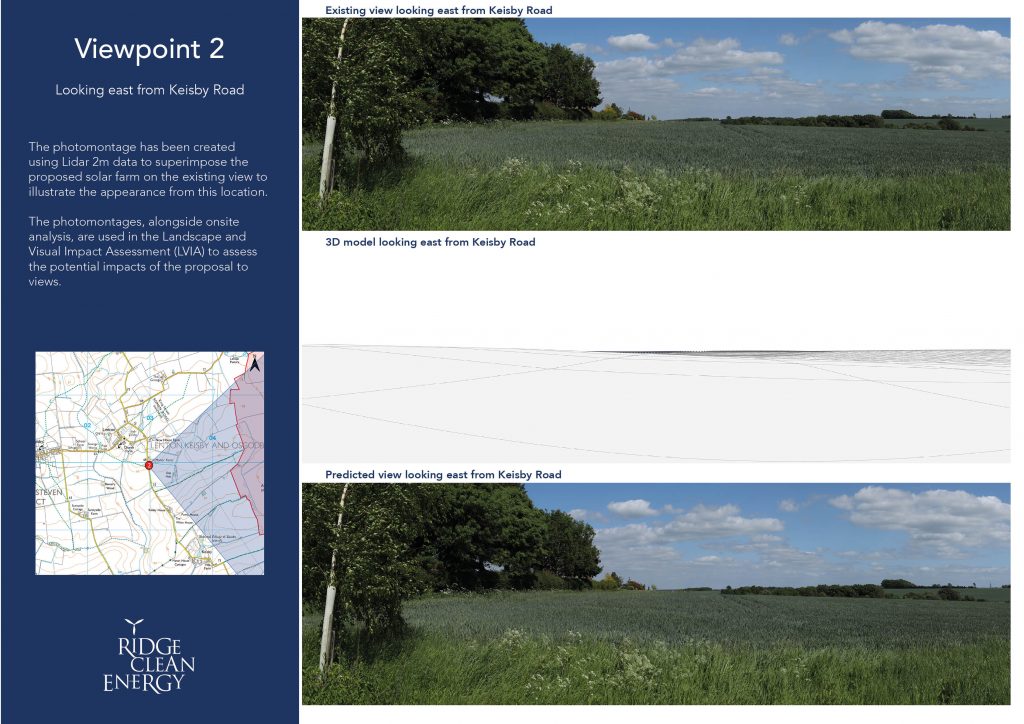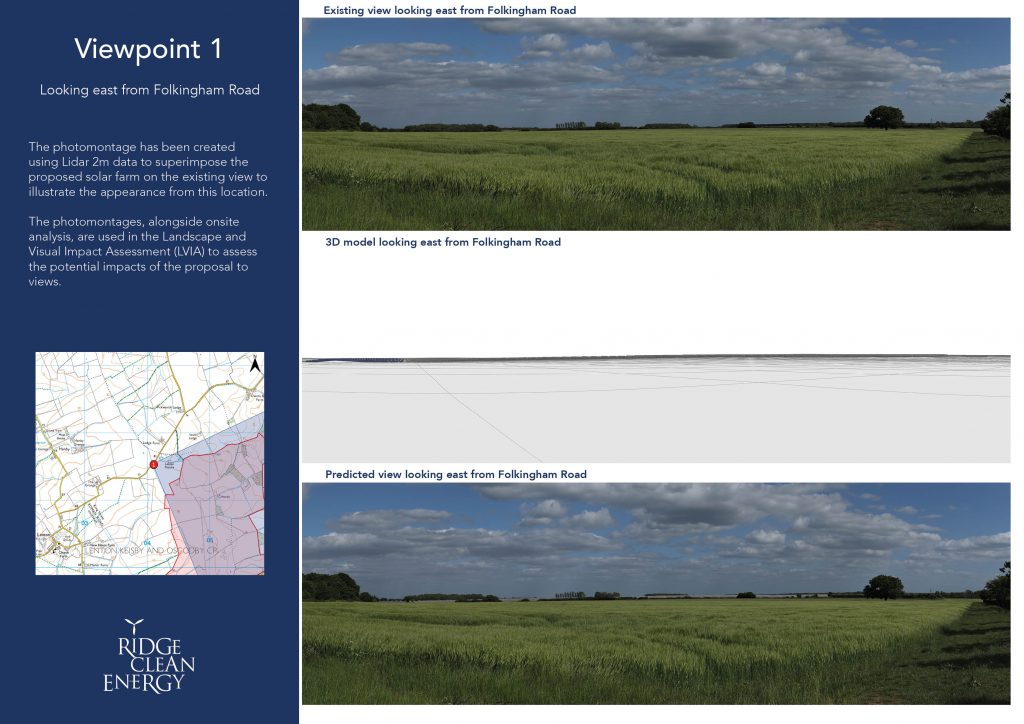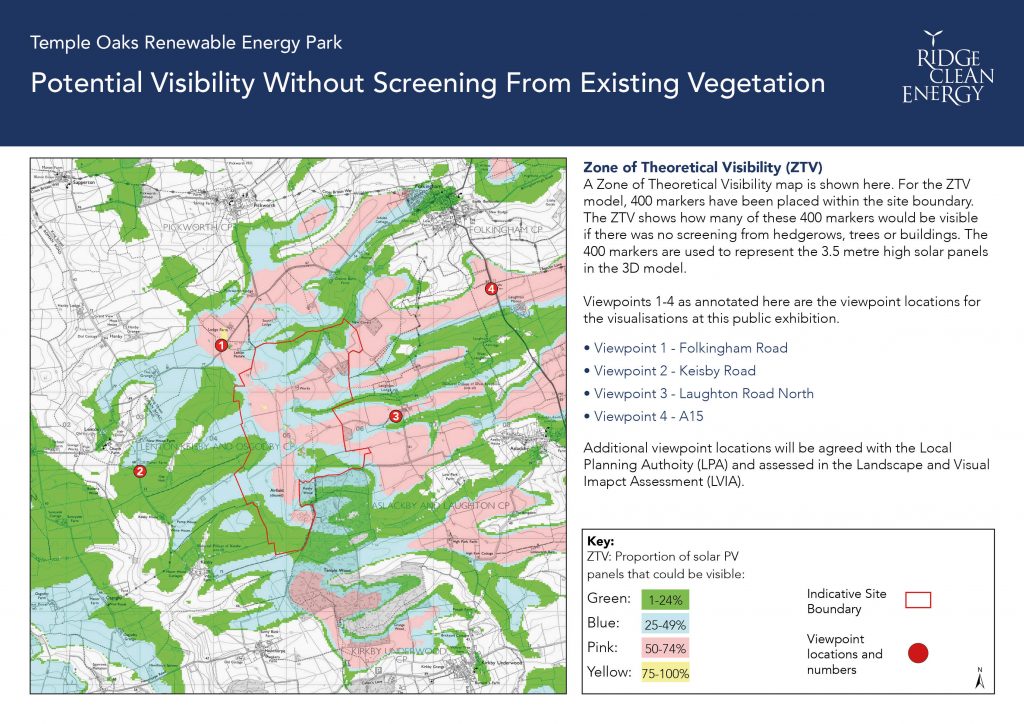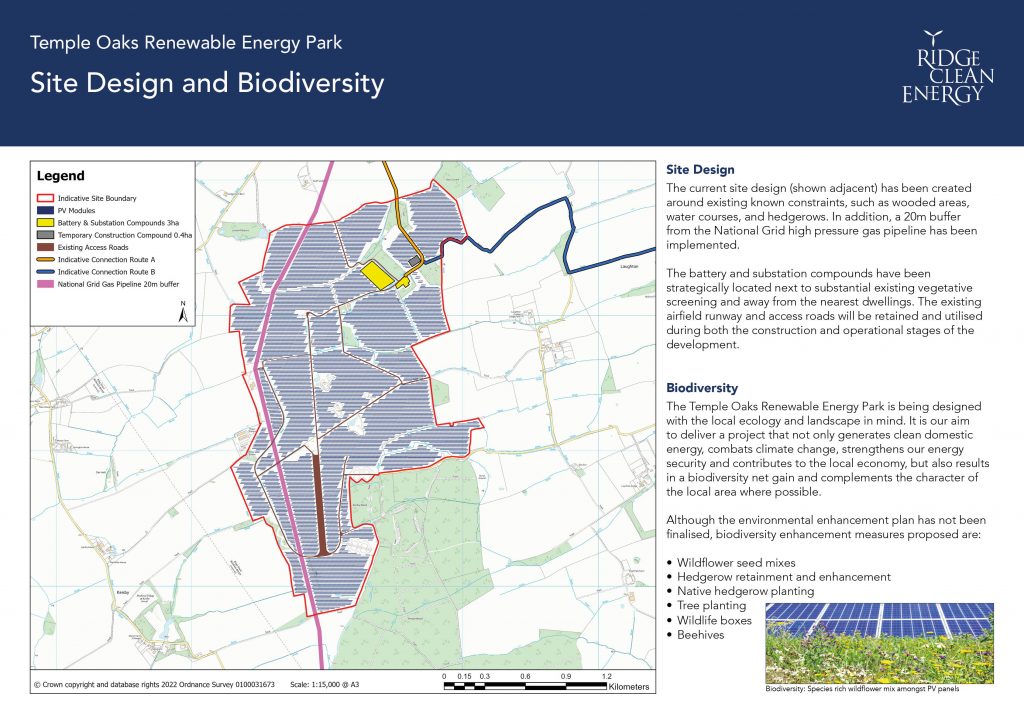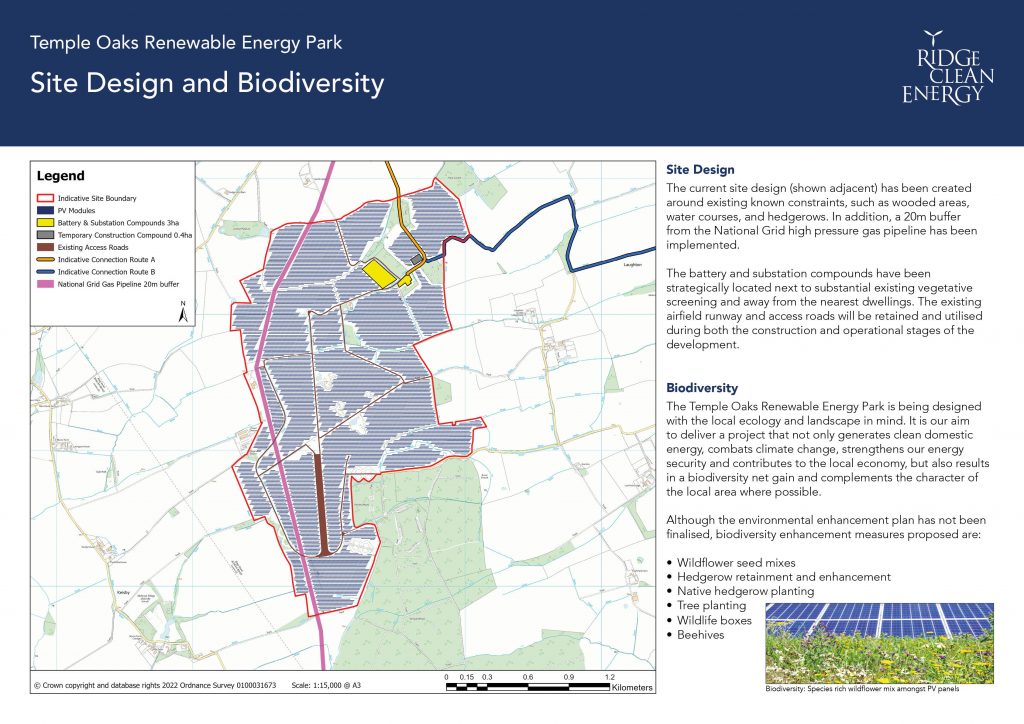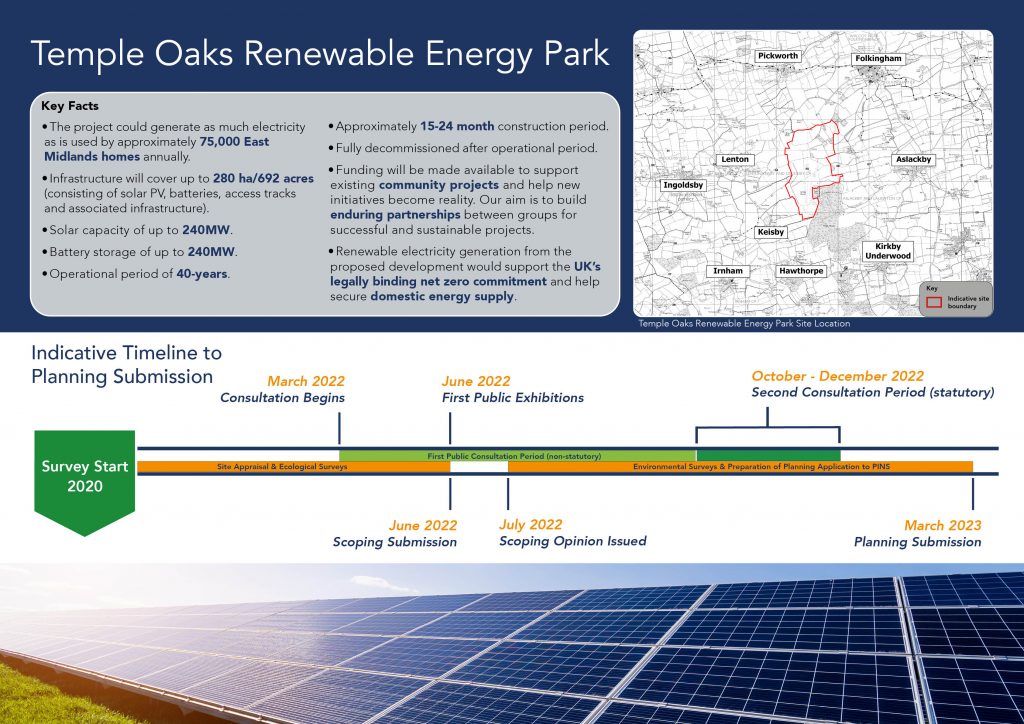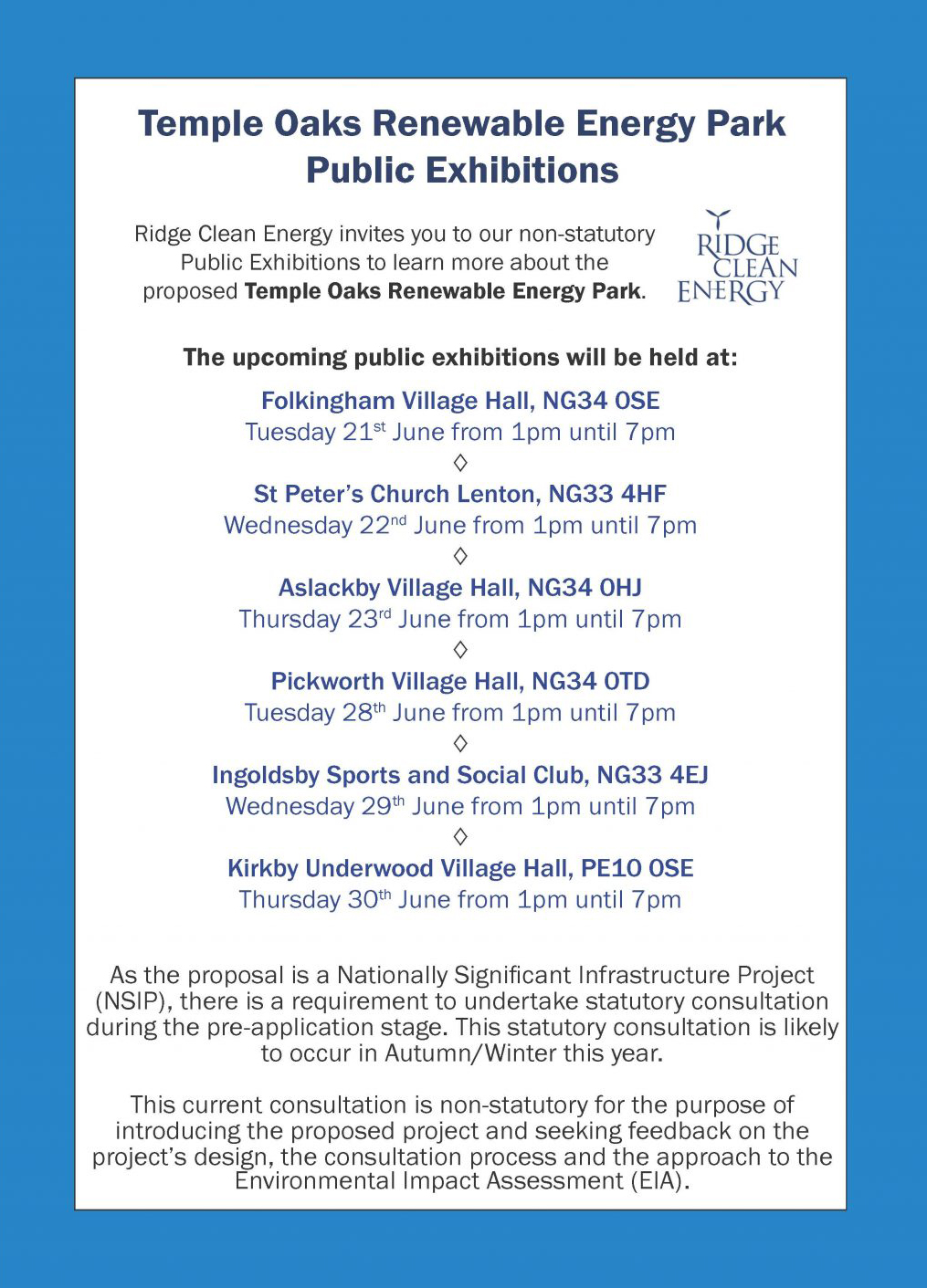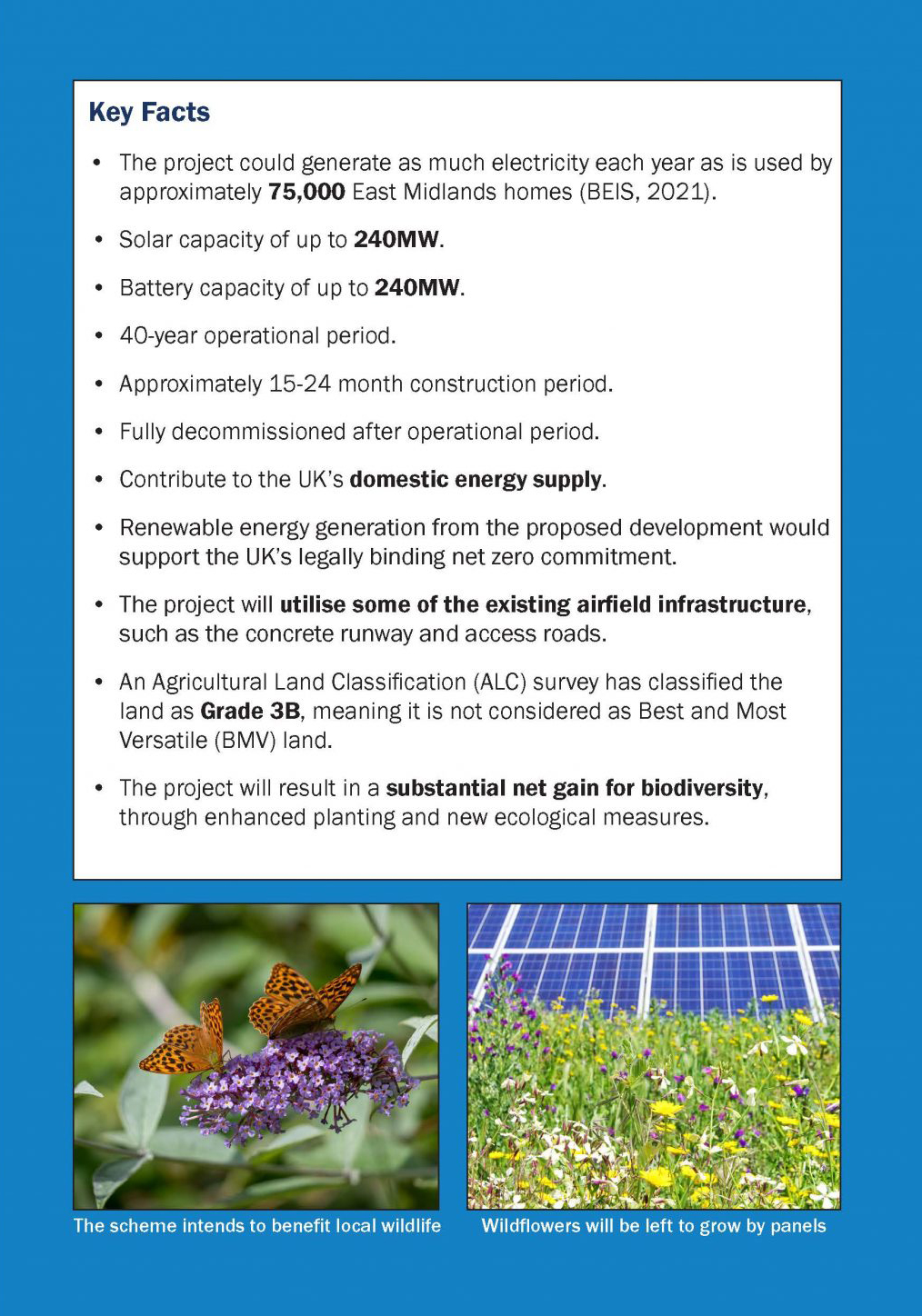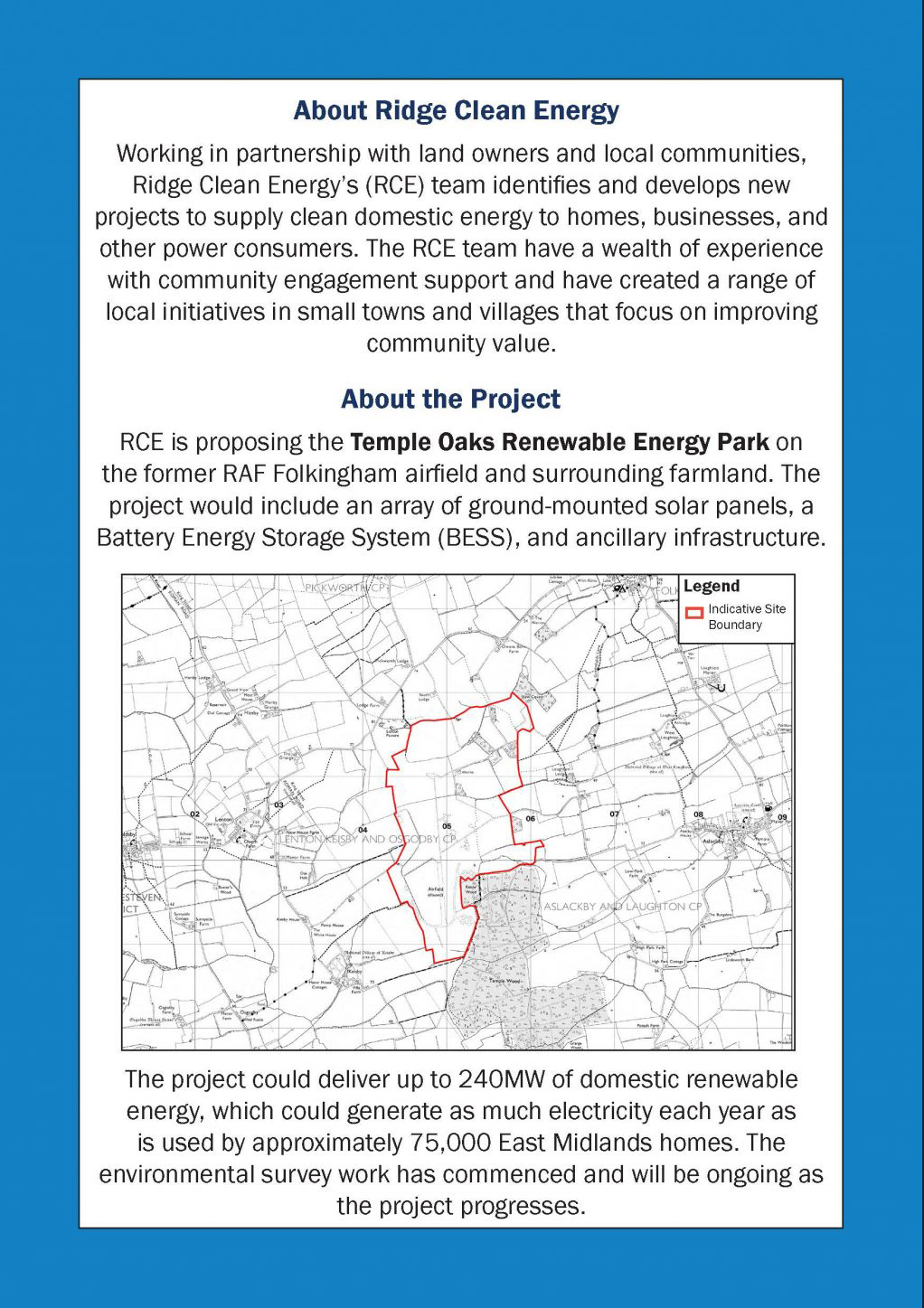Introduction
Ridge Clean Energy are developing a renewable energy park, consisting of a solar farm and a Battery Energy Storage System (BESS), on the former RAF Folkingham airfield and surrounding land in Lincolnshire.
The progress of the project will be updated on this website, posting updates on:
- The Project
- Timeline & Consultation
- News
- Community Partnership
You can contact the Project Team via the ‘Contact Us’ tab with comments, questions, or ideas.
View Site Boundary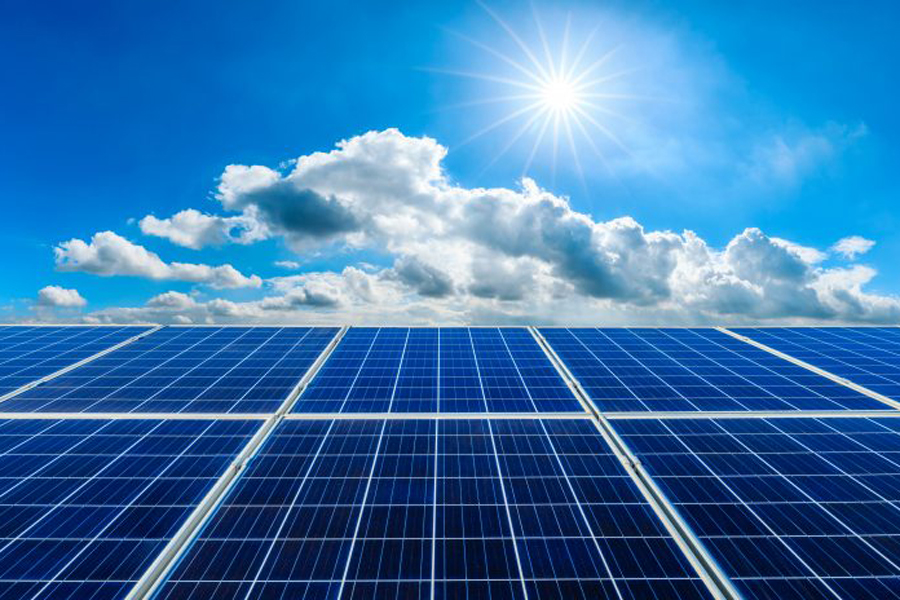
Project Outline
- The project would be located on the former RAF Folkingham airfield and surrounding arable land, approximately 2km south west of Folkingham village centre.
- The project could generate up to 240MWac of solar photovoltaic electricity.
- The project could host up to 240MW of BESS (Battery Energy Storage System).
- It is currently estimated that the solar farm could generate as much electricity each year as is used by approximately 75,000 East Midlands homes (BEIS, 2021).
- From the displacement of electricity generated from fossil fuel powered generation, the proposed development would offset the emissions of a significant quantity of pollutants. This reduction in emissions would contribute to the national legislation of net zero emissions by 2050, as well as the climate emergency declared by South Kesteven District Council.
- The project would result in a substantial net gain for biodiversity, through new ecological and enhanced planting measures, including beehives.
- Once the renewable energy park is operating, funding will be made available to the local community to help fund community initiatives.
Project Location
This site has been purposely identified as a suitable site for a large scale solar development whilst having a limited visual impact on the surrounding area.
- A substantial portion of the proposed renewable energy park is sited on the former RAF Folkingham airfield.
- The nearest settlement is over 800m away from the site boundary.
- The site is contained to one area.
- The topography and existing natural vegetation provide significant visual screening. Additional vegetative screening will also be planted during the construction phase.
- An Agricultural Land Classification (ALC) survey has classified the land as ‘Grade 3b’ and ‘Non-agricultural’, meaning it is not considered Best and Most Versatile (BMV) land.
The Planning Process
As the project would exceed 50MW of electricity generation, the project is considered a ‘Nationally Significant Infrastructure Project’ (NSIP). The NSIP process is overseen by The Planning Inspectorate (PINS), and determined by the Secretary of State for the Department for Energy Security and Net Zero, rather than the Local Planning Authority, which instead is a statutory consultee.
A Development Consent Order (DCO) is the process of obtaining permission for developments categorised as NSIP.
Solar Generation
Up to 240MWac
Battery Storage
Up to 240MW
Homes Powered
Up to 75,000
Project Timeline
|
Pre-application (No Set Time) - Current Stage of Development Before submitting an application, potential applicants have a statutory duty to carry out consultation on their proposals. The length of time taken to prepare and consult on a project will vary depending upon its scale and complexity. Responding to an applicant’s Pre-application consultation is the best time to influence a project, whether you agree with it, disagree with it, or believe it could be improved. |
|
 |
 |
|
Acceptance (28 Days) The Acceptance stage begins when an applicant submits an application for development consent to the Planning Inspectorate. There follows a period of up to 28 days (excluding the date of receipt of the application) for the Planning Inspectorate, on behalf of the Secretary of State, to decide whether or not the application meets the standards required to be accepted for examination. |
|
 |
 |
|
Pre-examination (3 Months) At this stage, the public will be able to register with the Planning Inspectorate to become an Interested Party by making a Relevant Representation. A Relevant Representation is a summary of a person’s views on an application, made in writing. An Examining Authority is also appointed at the Pre-examination stage, and all Interested Parties will be invited to attend a Preliminary Meeting, run and chaired by the Examining Authority. |
|
 |
 |
|
Exhamination (6 Months) During this stage Interested Parties who have registered by making a Relevant Representation are invited to provide more details of their views in writing. Careful consideration is given by the Examining Authority to all the important and relevant matters including the representations of all Interested Parties, any supporting evidence submitted and answers provided to the Examining Authority’s questions set out in writing or posed at hearings. |
|
 |
 |
|
Recommendation and Decision (6 Months) The Planning Inspectorate must prepare a report on the application to the relevant Secretary of State, including a recommendation, within three months of the close of the six month Examination stage. The relevant Secretary of State then has a further three months to make the decision on whether to grant or refuse development consent. |
|
 |
 |
|
Post Decision (6 Weeks) Once a decision has been issued by the relevant Secretary of State, there is a six week period in which the decision may be challenged in the High Court. This process of legal challenge is known as Judicial Review. |
|
 |
 |
